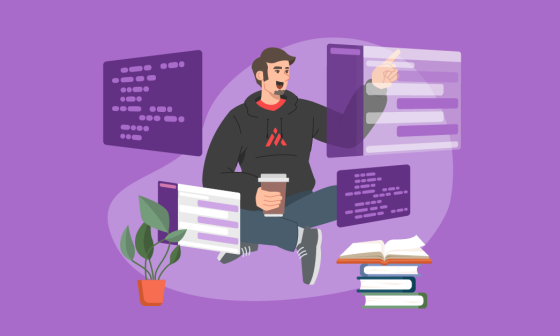Retrospectives are used frequently at MagmaLabs to give teams the opportunity to pause and reflect on how things have been going. Then, based on those reflections, to identify the improvements they want to make. Having Retrospectives frequently and regularly supports a team to continuously improve their performance – but what’s the best way to go about it? We have four simple questions to get you started…
What is a retrospective?
Diana Larsen defines it as:
“It is a special meeting in which a team decides to pause to reflect on the work done, see what lessons they can capitalize on, and decide how to apply what they learned in the near future.”
In Agile methodologies, such as Scrum (which we use here at Magmalabs) retrospectives are carried out at the end of each sprint. There, where we try to answer the following points —in a general way:
- What worked well
- What did not work at all
- What we want to try in the next iteration
- What we learned
- What we can improve
These points help us to have better iterations during development processes, making them more efficient, enhancing team learning, and motivating continuous improvement, thereby increasing project productivity. It is an exercise of participation, active listening, and consensual decision-making that gives us a sense of integration and understanding of the process, benefiting both the project and its members.
What is NOT a retrospective?
It is not about pointing out who did a “bad job”. A good directive is when we truly understand and believe that each person on the team did their best with the time given, their skills, knowledge, and available resources. It does not matter what is discovered in the process of retrospective.
It is not just another meeting in which there is much talking, and no tangible change is generated. Therefore, if a retrospective does not generate concrete actionable strategies or agreements made there are not executed, then it all will have been in vain since what we are looking for is continuous improvement for the near future.
Who should participate, and what is expected to be achieved?
All team members who are involved in the project should be invited to participate. At MagmaLabs that would mean: project leaders, developers, designers, and quality specialists. Nevertheless, it is also a good idea to include (if any) external stakeholders, so everyone can reflect together on the project.
During the meeting, participants are expected to express their points of view, identify what the main causes of the problems are, and choose the necessary actions to improve as soon as possible.
How is it done? What steps are recommended to be taken?
It is pretty simple; the dynamic consists of a team meeting to talk about what happened in the ongoing sprint, and agree on actions to improve the next cycle or sprint. Here are the essential steps:
- Set a goal and give people time to settle in and be in the right mood.
- Talk about how everything went to get a big picture of the sprint.
- Reflect individually on what was successful and what was not. This should be written down on a post-it (physical or digital).
- Use these two perspectives to propose solutions to improve as a team, and collectively decide which are to be carried out for the next iteration.
- Conclude the retrospective by thanking every member of the team for participating, and invite them to share how they felt during this exercise.
At MagmaLabs, we always try to have various dynamics, so it feels different each time keeping the general approach, but with adaptations that participants find interesting. Using some movie references, comparing them with the spring or visual material is also a good idea. But remember, the sky’s the limit: do whatever makes your retrospective fun and enjoyable.
The key to a successful retrospective is collective reflection and constant improvement. Undoubtedly, this is a tool that cannot be missed in any work process.





